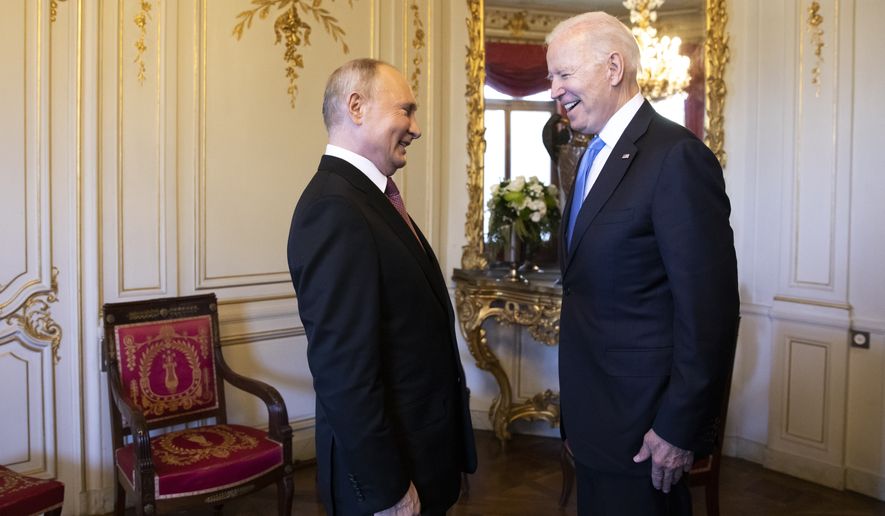As the world dissects the first face-to-face meeting between President Biden and Russian President Vladimir Putin, it is worth noting a single summit cannot mend all the rifts that have brought relations between the two nations to a low point in the post-Cold War era.
Thirty years of missteps and miscalculations, as well as allegations of nefarious meddling, will take time and real effort to resolve, but recent history shows that summits can lay the groundwork for progress. After taking a hard line against Moscow in his first term, even labeling the Soviet Union an “evil empire” in a 1983 speech, President Reagan pursued diplomacy with new Soviet premier Mikhail Gorbachev.
The two leaders held five summits between 1985 and 1988, de-escalating the Cold War and producing landmark arms-control agreements. The diplomacy continued under Mr. Reagan’s successor, President George H.W. Bush, leading to a historic treaty in 1990 for the first-ever cuts in long-range nuclear missiles.
As the Cold War ended and the Soviet Union, under Gorbachev’s leadership, reformed itself out of existence, it appeared the future of U.S-Russia relations was full of promise. A democratic, capitalist Russia was on the horizon.
“Our enemies have become our partners,” Mr. Bush said in a nationally televised address on Christmas Day 1991, “committed to building democratic and civil societies. They asked for our support and we will give it to them.”
Where did it all go wrong?
“As far as Russia was concerned, I saw no reason those relations should not be excellent,” said Anatol Lieven, a senior research fellow at the Quincy Institute for Responsible Statecraft, in this episode of the History As It Happens podcast. Mr. Lieven worked as a journalist covering the fall of Communism in Eastern Europe and the wars in Afghanistan, Chechnya and the southern Caucasus.
“There didn’t seem to be any significant geopolitical issue anymore dividing the two countries. Communism, thank God, had disappeared, so there was no longer an ideological threat from what became Russia to America,” Mr. Lieven said.
While Americans tend to focus on Russia’s failures to explain the sorry state of relations, Mr. Lieven said the U.S. push to expand NATO to Russia’s doorstep is a fundamental reason, one that would cause strife regardless of who is leading the Kremlin.
“Obviously Russia was going to resent and resist America trying to take over what had been for many centuries part of the Russian Empire,” Mr. Lieven said, referring to NATO’s eastward expansion. “That has led us to the present miserable position.”
“Obviously, Putin’s repression has turned many people in the United States against the Putin regime and against Russia, but I have to say that when it comes to questions like Ukraine and Georgia joining NATO, and America backing these countries in territorial disputes with Russia … any Russian government of any political stripe … would have to resist this in the name of vital Russian national interests,” Mr. Lieven said.
SEE ALSO: History As It Happens: Biden’s foreign policy
Yet there are several areas of potential cooperation. Ensuring that Afghanistan does not devolve into chaos as U.S. troops pull out this summer, resolving the crisis caused by the Syrian civil war, and drafting a treaty ending cyber sabotage should be possible, provided both sides are willing to make concessions and tone down the confrontational rhetoric as the Biden administration’s foreign policy unfolds, Mr. Lieven said.
For more of Mr. Lieven’s observations about the Biden-Putin summit and the state of U.S.-Russian relations, listen to this episode of History As It Happens.




